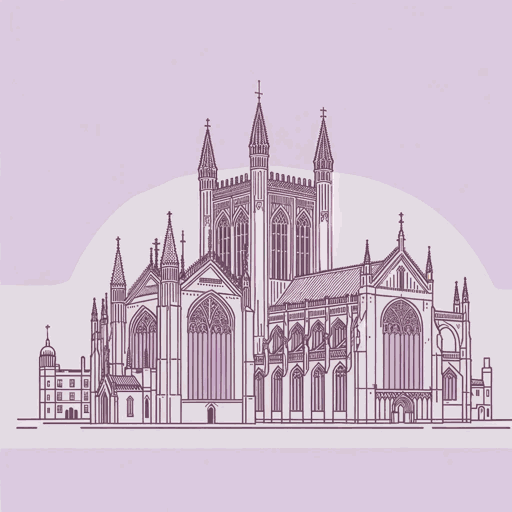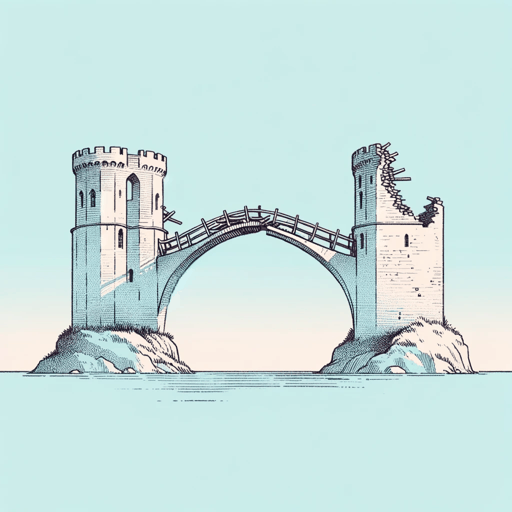63 pages • 2 hours read
Ken FollettFall Of Giants
Fiction | Novel | Adult | Published in 2010A modern alternative to SparkNotes and CliffsNotes, SuperSummary offers high-quality Study Guides with detailed chapter summaries and analysis of major themes, characters, and more.
Summary and Study Guide
Overview
Fall of Giants by Ken Follett, published in 2010, is a historical novel and the first installment of the Century Trilogy. The trilogy takes place during the 20th century and is told through the points of view of five interconnected families from Wales, Germany, America, and Russia. Fall of Giants spans World War I, the Russian Revolution, and the women’s suffrage movement. Winter of the World, the second book in the trilogy, takes place against the backdrop of World War II. The third and final book, Edge of Eternity, is set during the Cold War and the civil rights movement.
Ken Follett is originally from Cardiff, Wales. His thrillers and historical novels have sold upwards of 160 million copies. Fall of Giants joined many of his other works on the New York Times Best Seller List. Fall of Giants is the first installment of the Century trilogy, which examines the major events of the 20th century through a number of international viewpoints. Many of Follett’s works have been adapted into films and television mini-series. Follett has been a fellow of the University College in London, Yr Academi Gymreig at the Welsh Academy, and the Royal Society of Arts. Some of the awards he’s won for his works since 1979 include the Edgar Best Novel Award (Eye of the Needle) and the Libri Golden Book Award for Best Fiction Title in Hungary in 2010 (Fall of Giants). He’s received Honorary Doctorates in Literature from Saginaw Valley State University, the University of Glamorgan, and the University of Exeter.
Plot Summary
Fall of Giants opens with 13-year-old Billy Williams. Billy lives in Aberowen, a fictional coal mining town in Follett’s home nation of Wales, in the year 1911. The story begins with Billy’s first morning going to work in the mine. The main plot of Fall of Giants starts three years after the reader is introduced to Billy, in 1914, with a party.
The host is Edward “Fitz” Fitzherbert, an earl in Aberowen. The guests at the party are illustrious to the highest degree: King George V and his wife, Mary of Teck, are the principal guests. Also in attendance are Bea Fitzherbert (a Russian princess and the earl’s wife), Gus Dewar, Count Robert Von Ulrich, Walter von Ulrich, and Lady Maud Fitzherbert. Gus is an American who works as an advisor to the president, Woodrow Wilson. He’s well educated. Walter von Ulrich is not only a member of the German nobility, but also an old school friend of the earl’s, and Robert von Ulrich is Walter’s cousin from Austria. Lady Maud is the earl’s sister.
As the party gets underway, Lady Maud and Walter display an attraction toward one another. The reader also learns that Robert is gay, and Maud is as liberal as the earl is conservative. Meanwhile, Princess Bea has some conflict of her own. A pair of orphans from Russia harbor ill will toward the Russian royal family. Their names are Grigori and Lev Peshkov. Grigori and Lev both work at a locomotive factory in Saint Petersburg. Bea’s family executed their father because he brought his cows to graze on their land.
As World War I rages and concludes, Germany is thrust into an economic decline, which will create a vacuum of power. In that space, Adolf Hitler and the Nazi Party will take power, though Follett doesn’t write about the fallout from this until the second book in the trilogy. In Fall of Giants, Follett does cover the fall of Imperial Russia. This allows him to focus on one of the major themes of this novel, which is to break the bonds the aristocracy imposes on the common people.
Specifically, in Russia, Follett writes of Lenin’s part in the rise of the Bolsheviks. Lenin’s rise to power was enabled by the financial backing of Germany, who supported a political enemy with the goal to divide resistance in Russia and free up their eastern front. Stalin’s rise to power after Lenin’s death isn’t covered in Fall of Giants, but Follett does address this shift in Winter of the World.
Follett also explores America’s entry into World War I. America’s democracy means Woodrow Wilson needs to ensure the public supports America’s involvement in the European conflict. In the post-war world, Wilson tries to create international peace through his League of Nations, but he struggles to convince Americans to support his league.
International politics is not the only focus of Fall of Giants. Follett also devotes significant space to the suffrage movement and the growing power of the working-class, who advocate for reform and basic rights. The latter is prompted by a mining accident that occurs in Wales. Furthermore, workers and peasants in the Russian and British armies witness the ineptitude of aristocratic officers, which increases veterans’ resentment of the wealthy and powerful upper classes. Follett explores the difference in quality of life between the workers and the aristocrats. The latter have more opportunities, better health, and more education than the former.
The miners aren’t the only ones suffering—the soldiers fighting in World War I suffer too. Follett spares no detail in his descriptions of the horrors of the war, including the use of machine guns and poison gas. Rather than favoring either the Allied powers or the Central powers, Follett adopts numerous viewpoints to encourage his readers to sympathize with the terror and trauma experienced by all soldiers and civilians embroiled in this conflict.
Related Titles
By Ken Follett

A Column of Fire
Ken Follett

A Place Called Freedom
Ken Follett

Edge of Eternity
Ken Follett

Eye of the Needle
Ken Follett

Lie Down with Lions
Ken Follett

Never
Ken Follett

The Evening and the Morning
Ken Follett

The Hammer of Eden
Ken Follett

The Pillars of the Earth
Ken Follett

Winter of the World
Ken Follett

World Without End
Ken Follett
Featured Collections
Historical Fiction
View Collection
Memorial Day Reads
View Collection
Military Reads
View Collection
Politics & Government
View Collection
Poverty & Homelessness
View Collection
The Best of "Best Book" Lists
View Collection
Valentine's Day Reads: The Theme of Love
View Collection
War
View Collection

